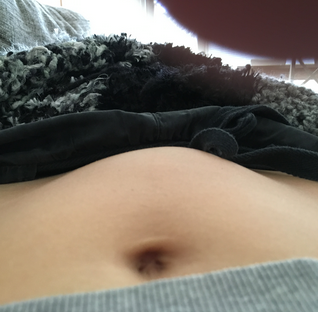Welcome
Often happens. . . not sure what NEXT/else to do.Tanya reached out. “I have a client with a fibroid around 5years, 46years. Can’t recall any trauma for trigger. Want to do steaming and gentling but I can’t seem to help her to stop bleeding. Have her on iodine. Doing acupuncture. Started with castor oil but she stopped after two night as started to throw clots out and was worried it was exacerbating rather than clearing. Have you any suggestions?“

What are fibroids?
Fibroids are abnormal growths that develop in or on a woman’s uterus. Sometimes these tumors become quite large and cause severe abdominal pain and heavy periods. In other cases, they cause no signs or symptoms at all. The growths are typically benign, or noncancerous.
The cause of fibroids is unknown. AND Fibroids, also known as myomas, are noncancerous growths that form from the muscle tissue in and around the uterus.
Size-wise they can vary from too small to see to the size of a melon (CLICK) and they mostly affect women in their 30s or 40s as they tend to shrink after menopause. “About two-thirds of women will have fibroids along their reproductive life,” says Dr Eisen Liang, an interventional radiologist who treats women with fibroids. But only 20-30 per cent of women with fibroids will experience symptoms (CLICK), and while they’re not life threatening they can really affect your quality of life.

We covered a lot of ground – I went through the App (periods) I did in 2014 first. Then went to the herbals from Rosita, then the P.C.T. manual (Arvigo 2013) then we looked at all that I would suggest – safe intiamte care pads to seeing Kaliana . .Do listen up.
“One of the most common symptoms would be heavy menstrual bleeding, particularly in women who have a submucosal fibroid that’s bulging into the uterine cavity, so increasing the surface area from which they can bleed,” says gynaecologist Dr Elizabeth Farrell from Jean Hailes for Women’s Health. “They often have big blood vessels visible when we look with the hysteroscope. When the lining sloughs off over the submucosal fibroid, those blood vessels will open up and there can be really heavy bleeding. It’s a bit like turning on and off a tap.” Other symptoms include (CLICK) backache, frequent urination, constipation, pain or pressure in the pelvic area, period pain, painful sex and the need to urinate a lot. Not to mention the anxiety associated with heavy bleeding damaging clothes and interfering with travelling, work and exercise.

What to consider if your fibroid is causing symptoms
Recommended treatment depends on the severity of symptoms and can range from medication through to hysterectomy.
“Ten to 40 per cent of women with fibroids might need treatment — that might be medications, Mirena IUDs, myomectomy or even hysterectomy,” says Dr Liang. If heavy menstrual bleeding is the main symptom, medication is usually trialed first — tranexamic acid, nonsteroidal anti-inflammatory drugs, birth control pills, or progesterone-like hormones, may be recommended. However, the size of the fibroid will remain, or perhaps grow. But if, like me, you are presenting with a number of symptoms and the fibroid/s are quite big, then a surgical procedure may be the best option. I was recommended an open-cut myomectomy because of the size and placement of my fibroid and my desire to have children. This operation requires a skilled surgeon and a 3-4 day stay in hospital and a six-week recovery time, which I needed. I couldn’t walk comfortably until about the eight week mark. There are several kinds of treatments available for women with symptoms of fibroids, some of them more invasive than others:
- Uterine fibroid embolisation (UFE) is also known as uterine artery embolisation (UAE): A less-invasive non-surgical procedure which blocks the blood supply of the fibroid and essentially starves it. The fibroid dies and shrinks, alleviating symptoms and is suitable for women who wish to keep their uterus. It is done under local anaesthetic, and generally requires a one-week recovery period.
- Myomectomy: This can be done by keyhole or open cut and requires a very skilled surgeon and is recommended for those who still want to have children. A laparoscopic myomectomy has a shorter recovery, but an open cut myomectomy requires a 3-5 day stay in hospital and a six-week recovery time.
- Hysterectomy: An operation where the uterus is removed. It requires a 3-5 day stay in hospital and a 4-6 week recovery time.
- Endometrial resection: This involves removing fibroids protruding into the cavity of the uterus with the aid of a camera through the vagina or cervix. It’s suitable for fibroids less than 4 centimetres and involves general anaesthetic.
- MRI-directed ultrasound: High-intensity focused ultrasound waves cause a localised increase in temperature to destroy the fibroid. “I don’t think necessarily the long-term studies have been that good,” says Dr Farrell. Treatment can take hours during which you have to lie still in a MRI machine.
Source: Jean Hailes for Women’s Health, Sydney Fibroid Clinic and Dr Elizabeth Farrell There are concerns that hysterectomy may be overused in Australia (CLICK) for the treatment of noncancer conditions, and Dr Liang encourages women to explore less invasive alternatives like UFE. “We still do 30,000 hysterectomies a year in Australia and more than 90 per cent of them for a benign disease,” Says Dr Liang. “The ratio at the moment is about 100 to one —100 hysterectomies to one UFE a much less-invasive procedure —a much less traumatic experience for women.”
